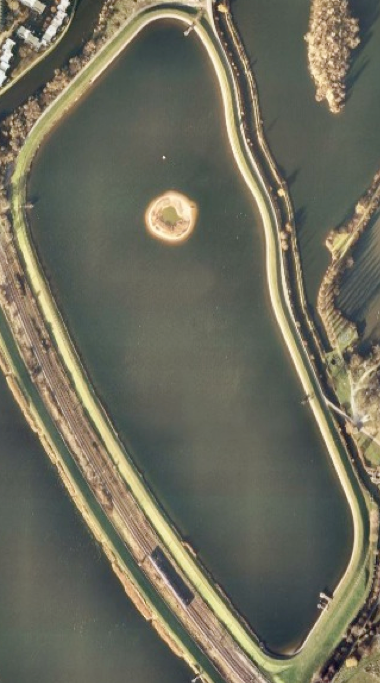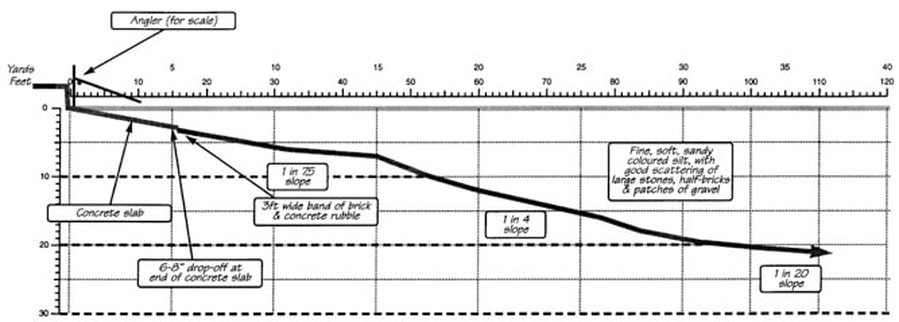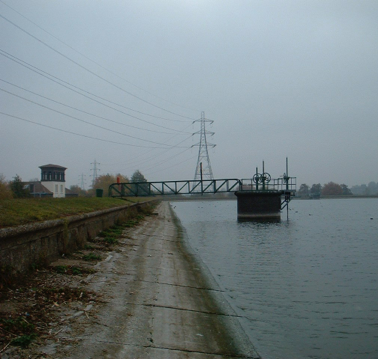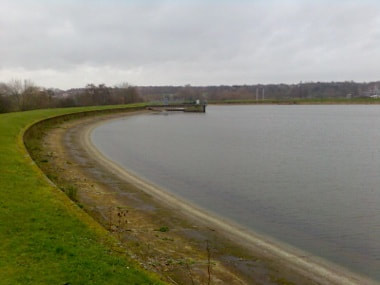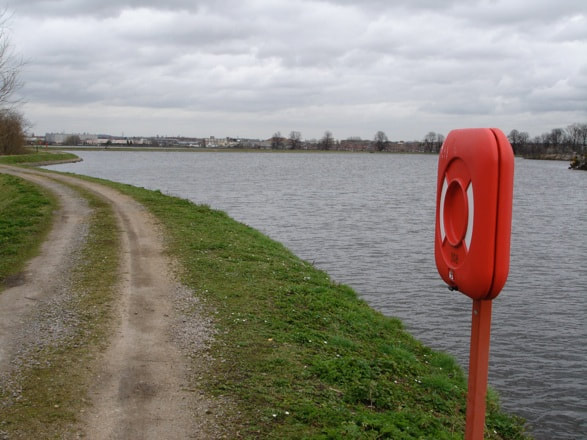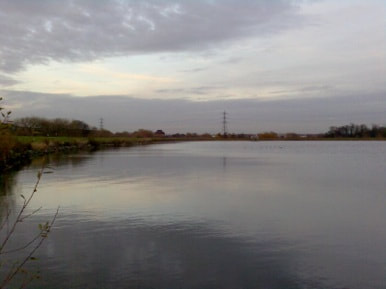The East Warwick (42 acres) is a 100% catch-and-release, fly-only water, available exclusively to WFFC members, with the season running from 1st Sept-31st May.
As with the day-ticket reservoirs, you are required to enter your details on the catch return sheets, before and after your session, Strict catch & release precautions apply: ie barbless hooks, no Boobies and knotless mesh landing nets. See full guidelines at the bottom of this page.
East Warwick season tickets are available, although WFFC members who buy a Nos 4 & 5 season ticket can buy an East Warwick season ticket at a reduced rate. East Warwick season tickets can be purchased at the Gate Office.
As with the day-ticket reservoirs, you are required to enter your details on the catch return sheets, before and after your session, Strict catch & release precautions apply: ie barbless hooks, no Boobies and knotless mesh landing nets. See full guidelines at the bottom of this page.
East Warwick season tickets are available, although WFFC members who buy a Nos 4 & 5 season ticket can buy an East Warwick season ticket at a reduced rate. East Warwick season tickets can be purchased at the Gate Office.
|
North East Tower to Birdhide
A popular section of the East bank, and not just because it’s the first place you arrive at. Has produced good fishing in the months of December-March when an Easterly or a North Easterly allows you to fish deep and slow on the floater with a couple of buzzer patterns and maybe a heavy Bloodworm on the point. The end of the North East Tower also appears to collect fry, including small roach and perch – watch to see what the grebes and cormorants are up to. Minkies or Tadpoles on a slow Intermediate can be a useful alternative when it’s slow on the buzzer. Birdhide to South East Tower The area opposite the Island is noticeably more shallow than the rest of this bank, although whether this affects your set-up is often determined more by height of water, especially at low levels. When level is high and close to retaining wall, be careful your flies don’t snag with the lip of the concrete bank or rocks beyond. This snaggy area is also when following fish can choose to take so fish your cast out and don’t be in a hurry to lift off too soon. |
|
South East Tower to South East Corner
This straight section of bank can see fish moving all along it if you get mild conditions in April-May or September-October with South/South East or North/North West winds and the wind-lanes that can form along here. Like the whole of the East bank, this relatively clear concrete bank allows scope for ‘odging’ – moving sideways while fishing a floater to counteract a sideways drift and get your flies deeper. With a heavy leaded point fly it’s surprising how deep you can get, with takes registering more decisively on a straight line than one with a curve in it. South End Even in a strong South West wind the East side of the Towers provides a small section of sheltered water which can see moving fish. The other side is another spot that at times can contain a lot of fish in a small area, either sitting just to the left of the Towers or in front of the Reedbed. Try it if the weather’s still hot when the reservoir re-opens in September. The South West Corner is noticeably shallow close in, with a ridge running across the front of it before you get to deeper water. Reedbed to North West Tower It may only offer a couple of fishable spots but the Reedbed is well worth a look, particularly the swim to the immediate North of it. This length of natural bank (not something fly-fishers get much of at Walthamstow) can be a line-catching nuisance to those of us without line-trays, but does offer scope in West/South West winds. April-May can see great fishing to large claret buzzers (all those bloodworms hatching out), and was where we scored on Diawl Bachs for FF&FT feature. Further up, the length opposite the Island can be another hot-spot. As with the East bank it pays to have a walk up and down looking for moving fish – either sipping down buzzer or crashing after fry – before you start. Minky or buzzer? That’s often a crucial decision on the Warwick. North bank - natural & concrete The corner the other side of the North West Tower gives deep water in easy reach. A long cast to your left allows you to fish your buzzers and bloodworm in a natural fashion along the slope, rather than straight up. If you draw a blank here there are a few more gaps in the brambles along the natural bank to your left that can also produce. The West end of the concrete is another hot-spot, while it’s worth trying for fry-feeders off the NE Tower from the NE corner if the wind makes the East bank awkward. |
South East Tower
South End
Looking North along the West Bank
North Bank from West Tower
|
East Warwick Rules & Guidelines
- CATCH & RELEASE only.
- WFFC members with East Warwick season tickets only. (Note a)
- SIGN IN before fishing.
- BARBLESS or DE-BARBED hooks only.
- SIZE 10 longshank (or equivalent length) maximum hook size. (Note b)
- LANDING NET to be used at all times. (Note c)
- UNHOOK FISH IN WATER. (Note d)
- TOOLS for DE-BARBING, UNHOOKING, CUTTING LINE to be carried at all times. (Note e)
- NO BOOBIES. (Note f)
- SINGLE HOOKS only.
(a) Children up to 16 years old may fish accompanied by East Warwick season ticket holder. All other East Warwick rules apply to under-16 year olds. All members are entitled to act as bailiffs. All members are subject to official club checks.
(b) Hook sizes larger than a size 10 may be used, but their length should not exceed that of a size 10 longshank hook.
(c) Knotless landing net to be used at all times to allow fish to be landed swiftly and returned while still fresh. (Knotless agreed at 1998 AGM & now law). Soft micromesh is considered best practice, as they do not split fins. Micromesh pan nets are considered best of all for catch & release.
(d) Handling of fish should be minimised and it is recommended that the landing net mesh should be kept between hand and fish. Support fish before release until they swim away strongly in case it turns over a few yards out beyond reach. Photographing of fish should be done as quickly as possible - after unhooking with wet hands, holding the fish over and close to the water, one or two shots only. Members agree not to enter East Warwick fish into specimen fish competitions, e.g. Troutmasters, etc.
(e) Very occasionally deep hooking can occur with any type of fly/method. Should this occur the angler should have tools to reach the fly or, in extreme cases, cut the nylon close to the eye of hook. These tools should be about their person not in a bag some distance away.
(f) Other flies/methods that are likely to result in deep hooking are banned.
